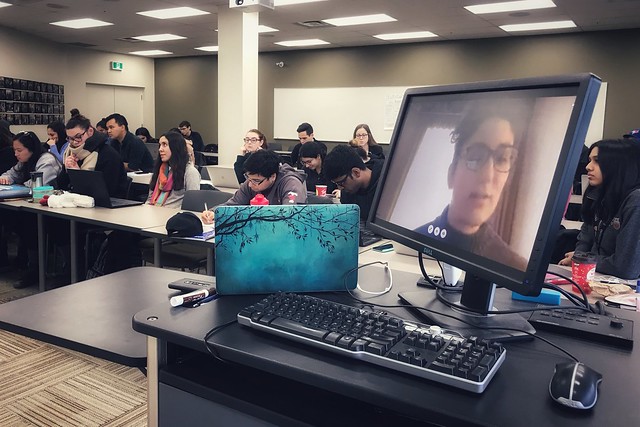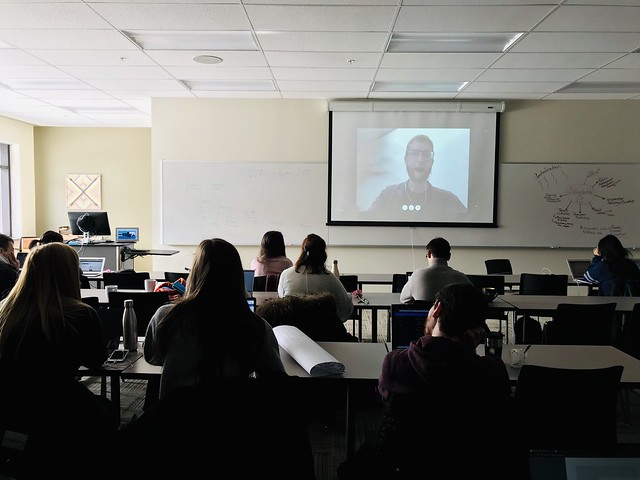Government in a Digital Era: Module 4
From January to April 2019, I’m teaching the “Government in a Digital Era” course as part of the Masters of Public Service program at the University of Waterloo.
I’ve had a few people ask me about the course—what we’re learning, what we’re reading, how the classes are going—so I thought I’d share some information about each module that we cover in the class. Today, I’m sharing the course overview from our fourth module, as well as a link to some of the reflections that the students have done. I’m also sharing what bowtie I wear to class every week because, well, why not?
Module 4: Technology and Platforms
While “digital” is not a description of technology, the move towards digital government is enabled by and dependent on technology as a way to better deliver service and create better policy. In this module, we will understand how technology has been an enabler and a hindrance in government transformation efforts, and examine how technology can be used to effectively usher government into a digital era.
In the first part of the module, we will unpack the idea of government as a platform—including the benefits and flaws of that model—and learn about the concept of using technology as an enabler for others to do good work. This will include an exploration of concepts such as open data, data standards, application programming interfaces, interconnectivity, blockchain, and open source, as well as an introduction to the burgeoning civic tech movement.
The second part of the module will look at how technology decisions are made in government: the role of shared services, the importance of procurement reform, the need for outside vendors to fill gaps, and the upskilling of current public servants to meet new government technology needs. This module will also introduce common technologies (languages, stacks, processes, etc.) that are currently being used in governments across Canada.
Guest Lecture A: Lia Milito, Managing Director, Code for Canada
Guest Lecture B: Sean Boots, Technical Advisor, Canadian Digital Service
Learning Outcomes:
- Understand the role that technology plays in digital service delivery and policy-making in a digital era.
- Gain awareness of the interplay between technology, service delivery, policy analysis, communications, business, government contracting, and civil society.
- Critically examine opportunities for transformation in the way technology is deployed and operationalized currently in government, particularly around the governance model, the procurement process, and human resources.
Activity:
You are working in the university IT department, and have been tasked with figuring out how to make submitting undergraduate assignments for both students and professors. Create a list of questions you will ask to make sure you’re implementing the right platform—as well as an indication of to whom you will ask those questions—and tell us a little bit about how those questions will inform your decisions about your choice of technology and how you plan to either procure or build it.
Resources and Reading:
- Preparing for government as a platform, Felicity Singleton
- Delivery-driven government, Jennifer Pahlka
- The strategy is delivery, again, Mike Bracken
- I don’t know how to use a computer!, Leah Lockhart
- Do we still need systems integrators?, David Eaves
- Government as a platform, Anne-Marie Slaughter
- Code Cracking: why is it so hard to make a website for the government?, Yiren Lu
- What is government as a platform and how do we achieve it?, Mark Thompson
- Government as a Platform: How New Foundations Can Support Natively Digital Public Services, Tom Loosemore
- Governance in a Digital Age, Kent Aitken
- How we tackle the challenges of transformation, Michael Brunton-Spall
- Boiling frogs, GCHQ
- The government IT self harm playbook, Dan Sheldon
- Pizza as a service 2.0, Paul Kerrison
- Open standards: a definition, Bruce Perens
- Which side are you on, vendors?, Jennifer Pahlka
- Unnecessary Risks by the Government of Canada, John Glowacki
- Use of Consultants and Senior Advisors in Government, Bonnie Lysyk
- Beginning the Conversation: A Made-in-Canada Approach to Digital Government, Canadian Digital Service
- Instruction Slides
Student Reflections
At the start of the course, I asked students to share their reflections on each module, and encouraged them to share them publicly where they felt comfortable. A few of them took me up on the challenge:
- A few students are now using blogs and personal websites to upload their reflections: 1, 2, 3
- A few students uploaded their reflections through video posts.
- One student used Google Docs to share their thoughts.
- One student shared their reflection on Twitter.
- Another student created a Google Form to share her reflection and exemplify the concepts we learned in class.
- And of course, there was another episode of the class podcast.
I’ve encouraged more students to share their thoughts in the open, rather than simply uploading their files. Hopefully, more to come next week!
Bowtie of the Week (and other photos)
I wear a bowtie to class every week, so I thought I’d end this post with a snapshot of that bowtie, and any other snapshots from the class.



